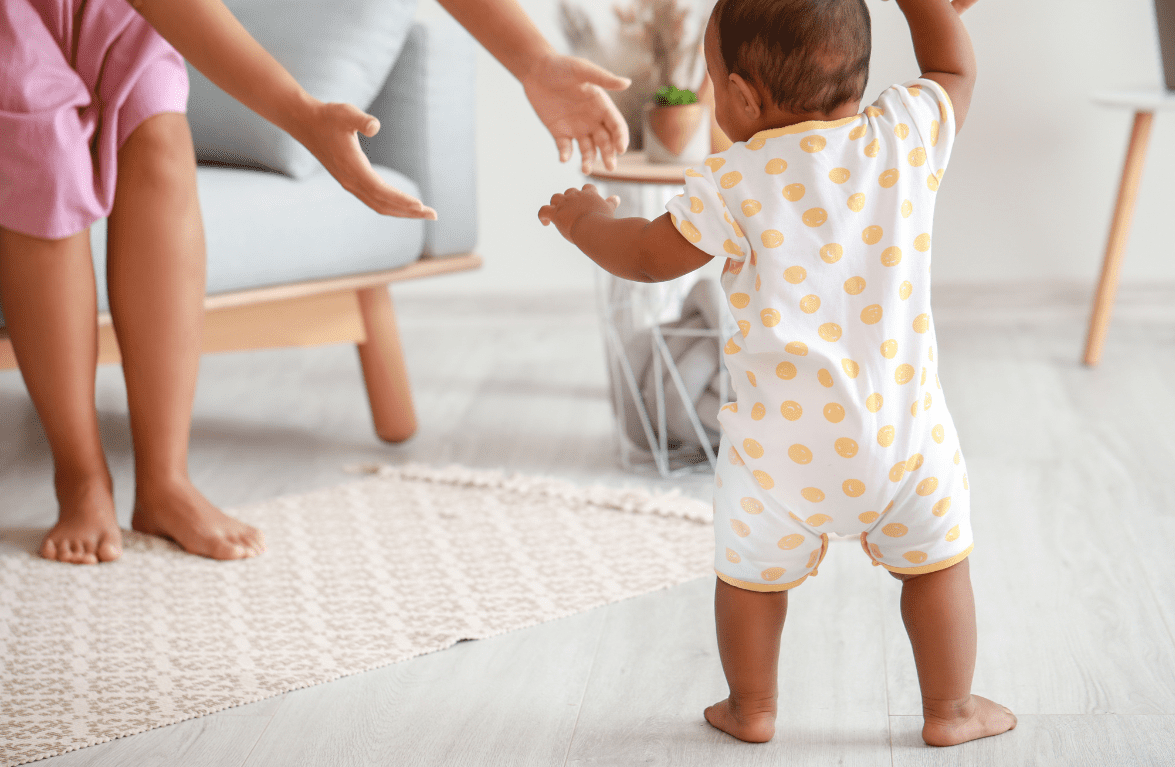The first year of a child’s life is a period of remarkable growth and development, a journey that parents and caregivers are privileged to witness. During this time, infants undergo numerous physical changes as they transition from newborns into toddlers. Here are five major milestones that highlight the physical growth of a 1-year-old child, each one a testament to your child’s unique journey.
Rapid Weight Gain and Growth
One of the most noticeable milestones during the first year is the rapid increase in weight and length, a perfectly normal part of your child’s growth. At birth, the average baby weighs about 7.5 pounds and measures approximately 20 inches in length. By the time they reach their first birthday, most infants will have tripled their birth weight and grown about 10 inches. This growth spurt is fueled by adequate nutrition, typically from breast milk or formula, and later supplemented with solid foods. Pediatricians monitor this growth closely during regular check-ups, ensuring that the baby is developing within a healthy range, providing you with the reassurance you need.
Development of Gross Motor Skills
Gross motor skills involve the movement and coordination of large muscles. In the first year, significant milestones include rolling over, sitting up, crawling, and eventually standing. Around 3 to 4 months, babies typically start rolling from their stomachs to their backs. By six months, many can sit without support. Crawling usually begins between 6 and 10 months, and by the time they reach their first birthday, many babies can pull themselves up to stand and may even take their first independent steps. These milestones are crucial as they pave the way for walking and more complex movements.
Fine Motor Skills and Hand-Eye Coordination
Fine motor skills involve using small muscles in the hands and fingers. Throughout the first year, babies develop these skills significantly. By 3 to 4 months, infants can grasp objects placed in their hands. By six months, they can transfer objects from one hand to the other and start developing a pincer grasp (using the thumb and forefinger) by around nine months. By 12 months, many babies can pick up small objects, such as pieces of food, and may begin using utensils with assistance. Hand-eye coordination also improves, allowing them to explore their environment more effectively and interact with their toys and surroundings.
Teething and Oral Development
Another significant milestone in the first year is teething. Most babies get their first teeth between 4 and 7 months, starting with the lower central incisors. By their first birthday, many children will have several teeth. This development is crucial for transitioning from a liquid diet to solid foods. Teething can be challenging for babies and parents, as it often comes with discomfort and irritability. However, it marks an essential step in the baby’s growth, contributing to their ability to chew various foods and aiding speech development.
Growth of Sensory and Cognitive Abilities
Physical growth is not limited to visible changes; sensory and cognitive developments are equally significant. An infant’s vision, hearing, and touch improve markedly throughout the first year. Newborns initially see only a few inches in front of them and have a limited color range, but by six months, they can see more clearly and begin to recognize familiar faces and objects. Hearing becomes more acute, enabling them to respond to voices and sounds, which is crucial for language development. The sense of touch evolves as babies explore different textures and objects, enhancing their understanding of the world around them.
Conclusion
The first year of life is a period of extraordinary physical growth and development, a journey that parents and caregivers are instrumental in. From rapid weight gain and lengthening to the mastery of motor skills, teething, and the enhancement of sensory abilities, each milestone lays the foundation for a child’s future development. Your role in supporting and encouraging these milestones is crucial, providing a nurturing environment that fosters healthy growth and development. As babies reach their first birthday, they are physically transformed and equipped with the foundational skills needed for the next stages of their lives, a testament to your love and care.

